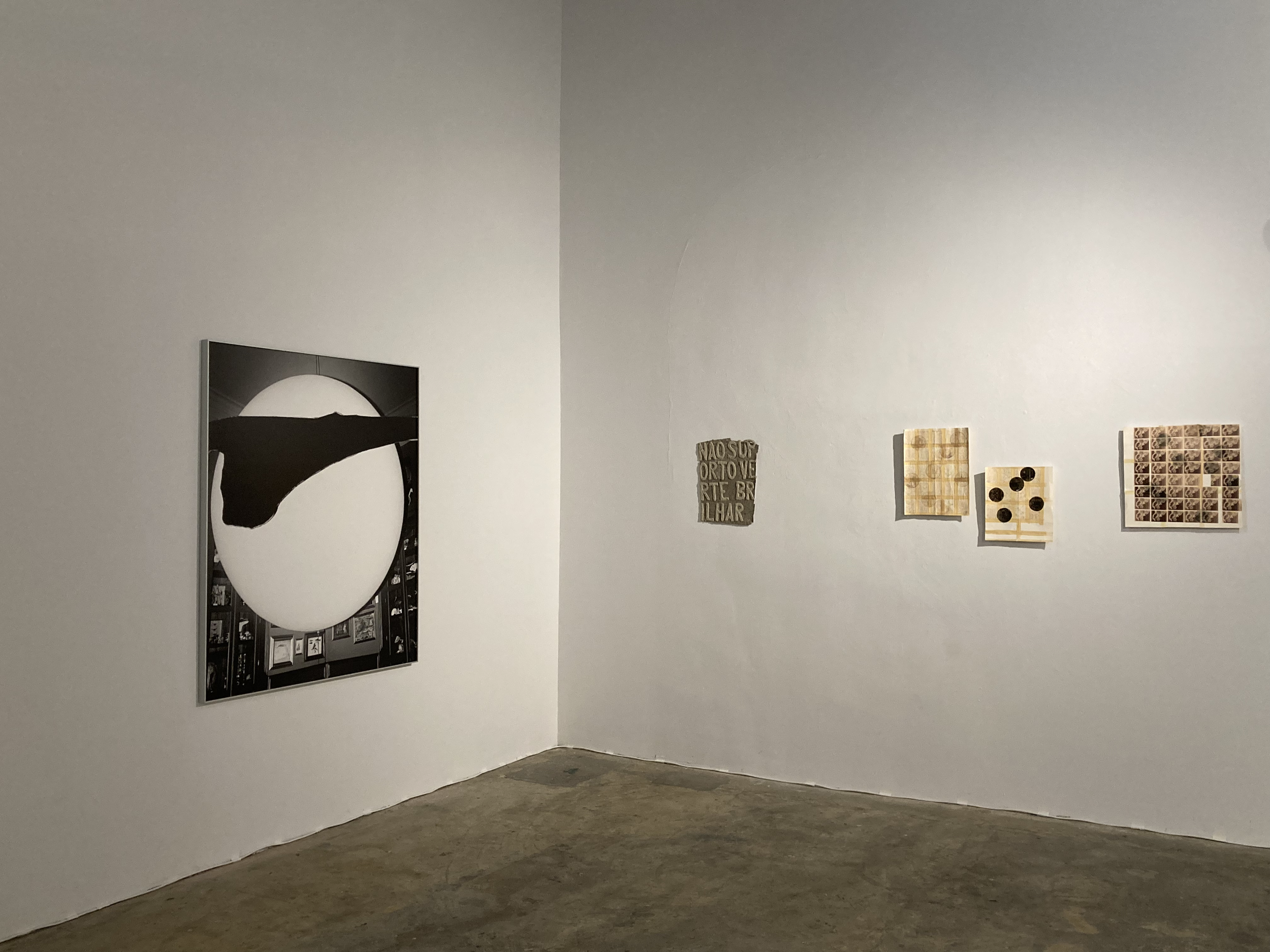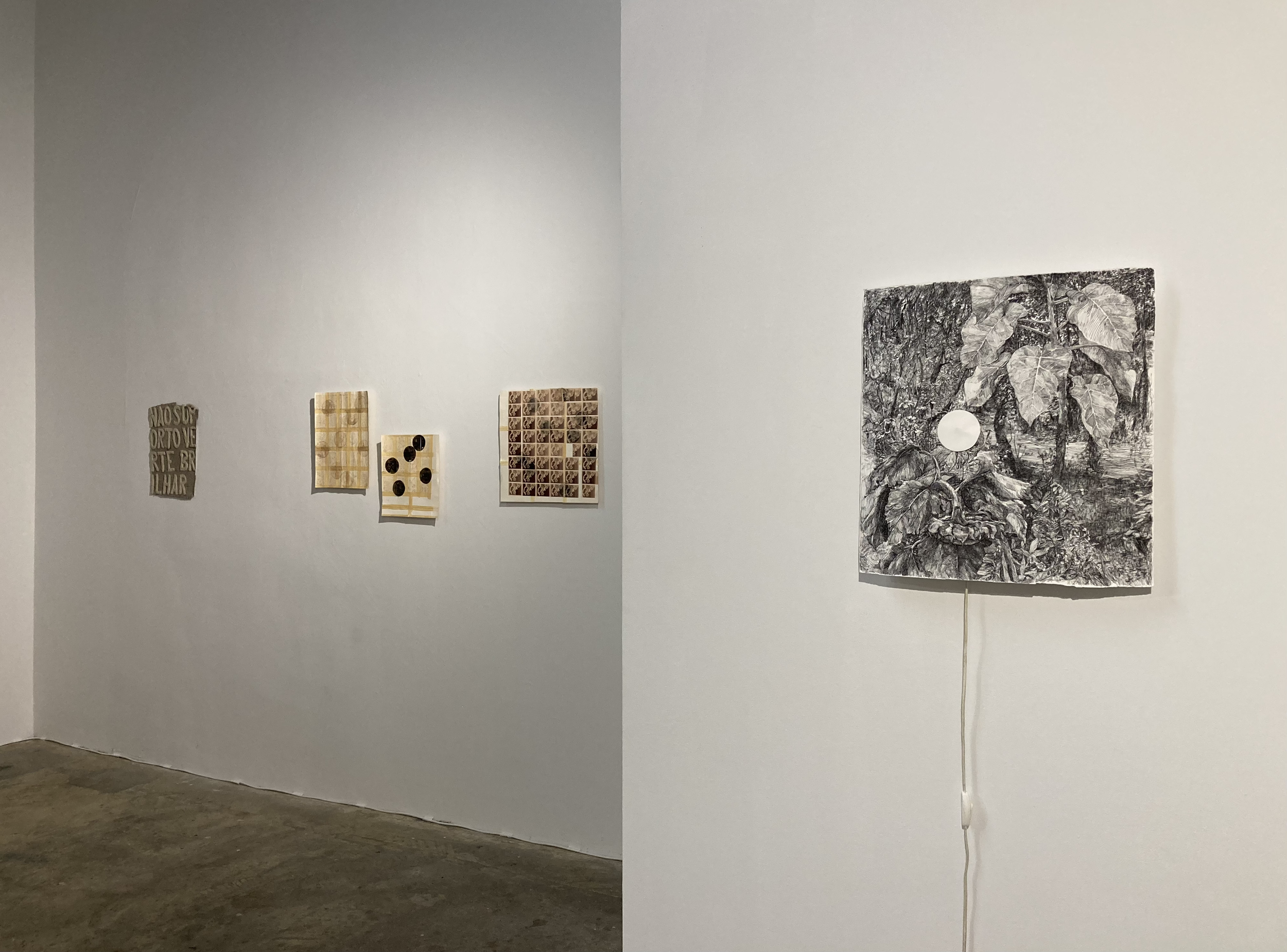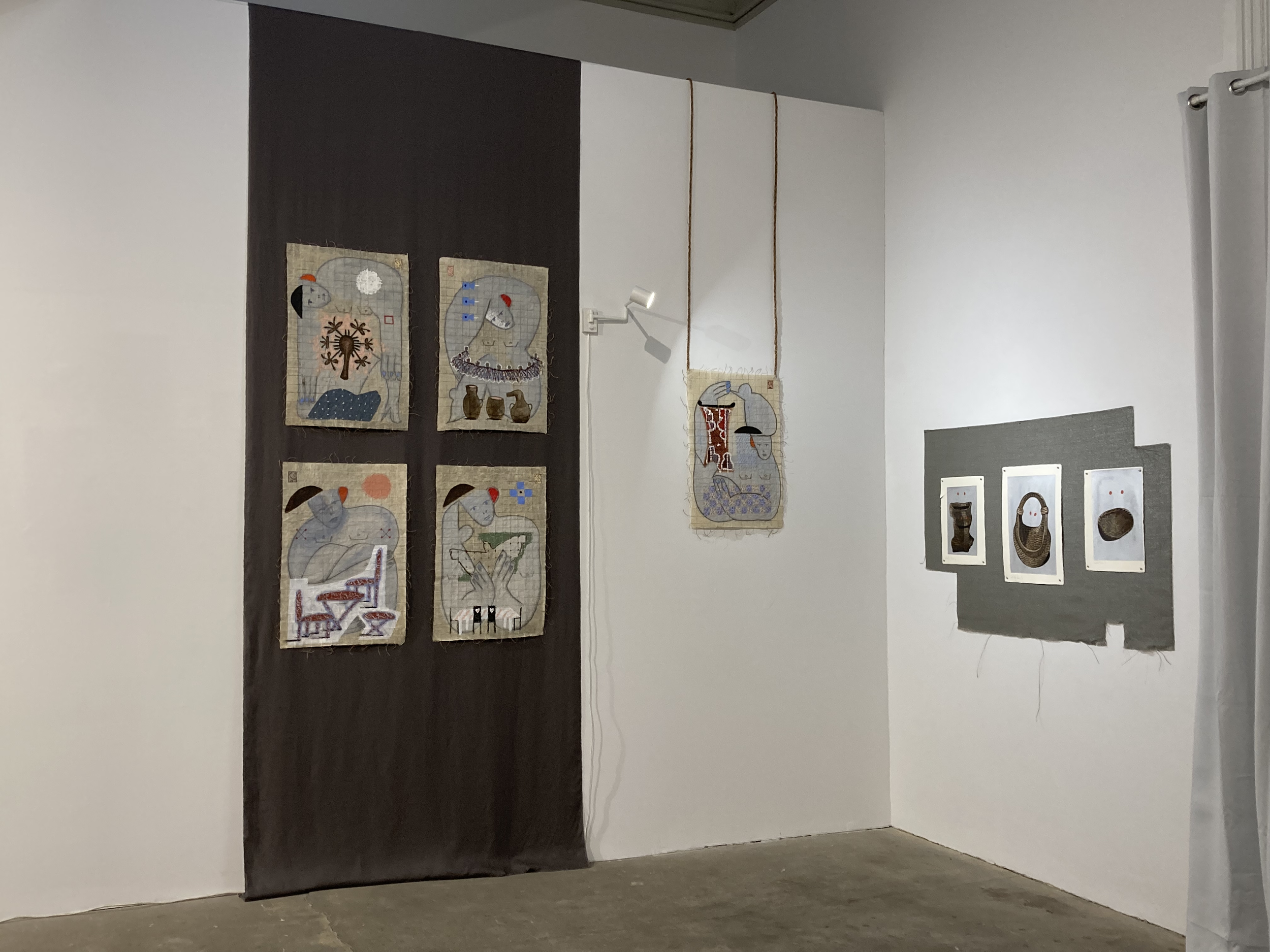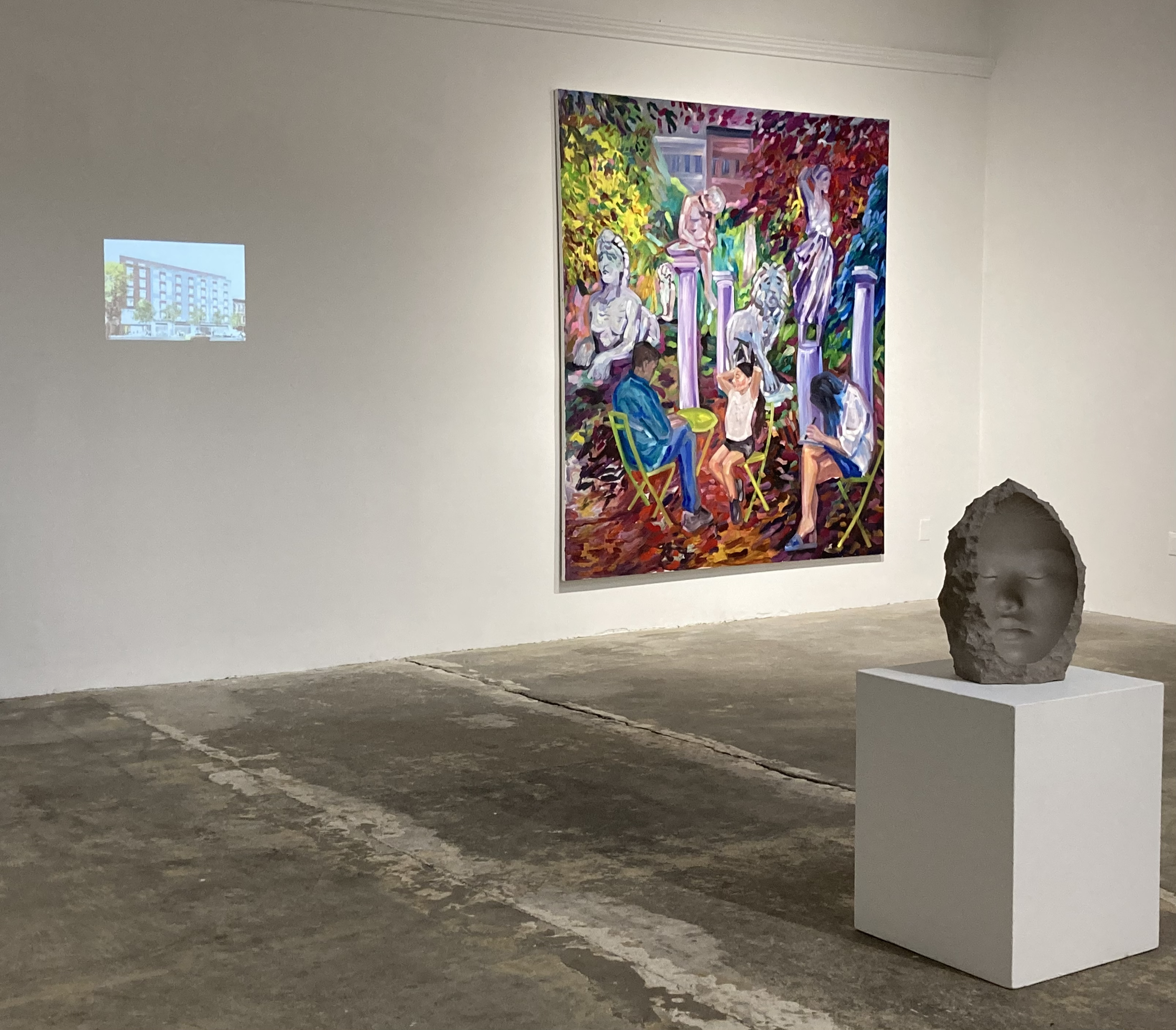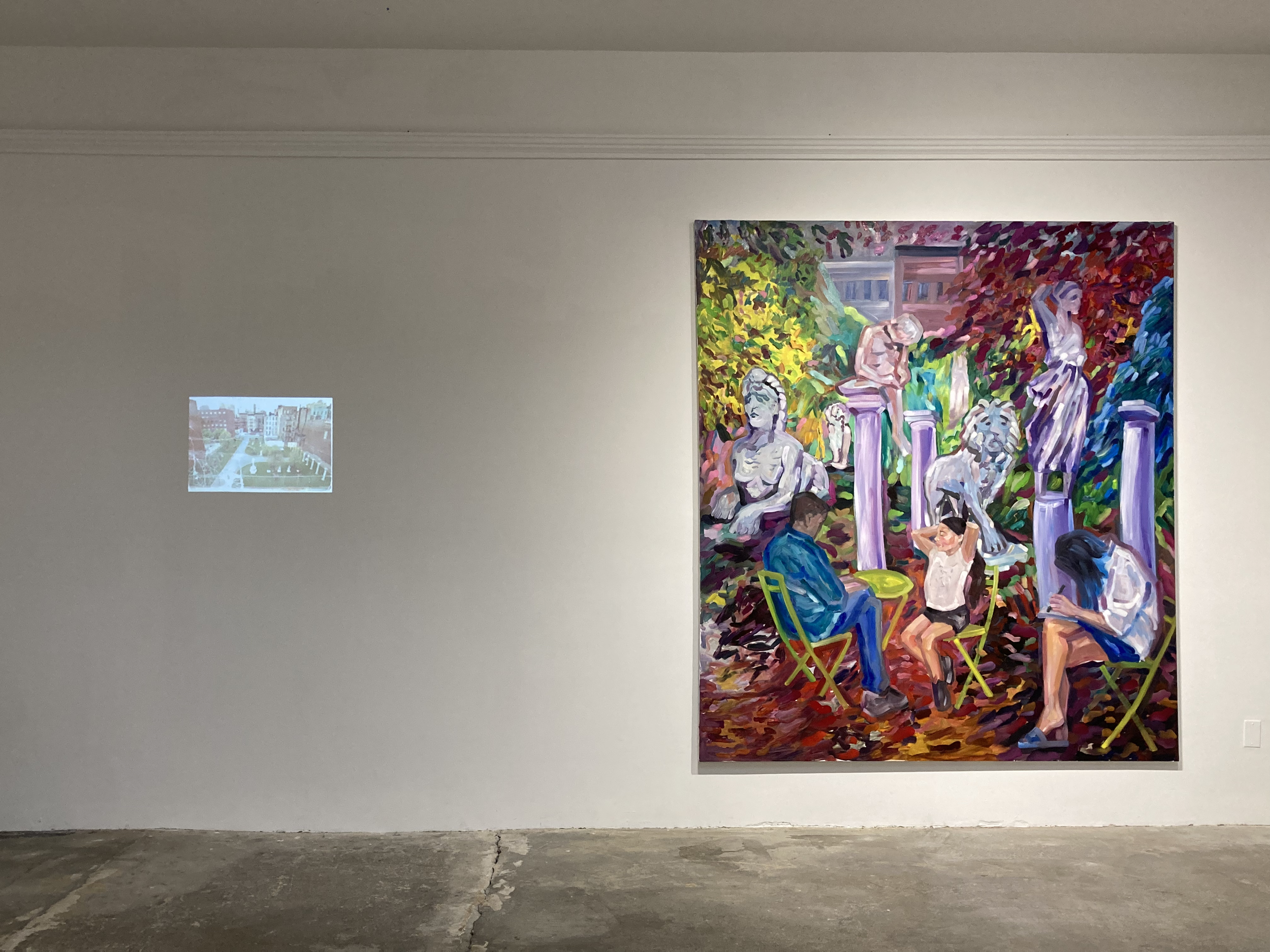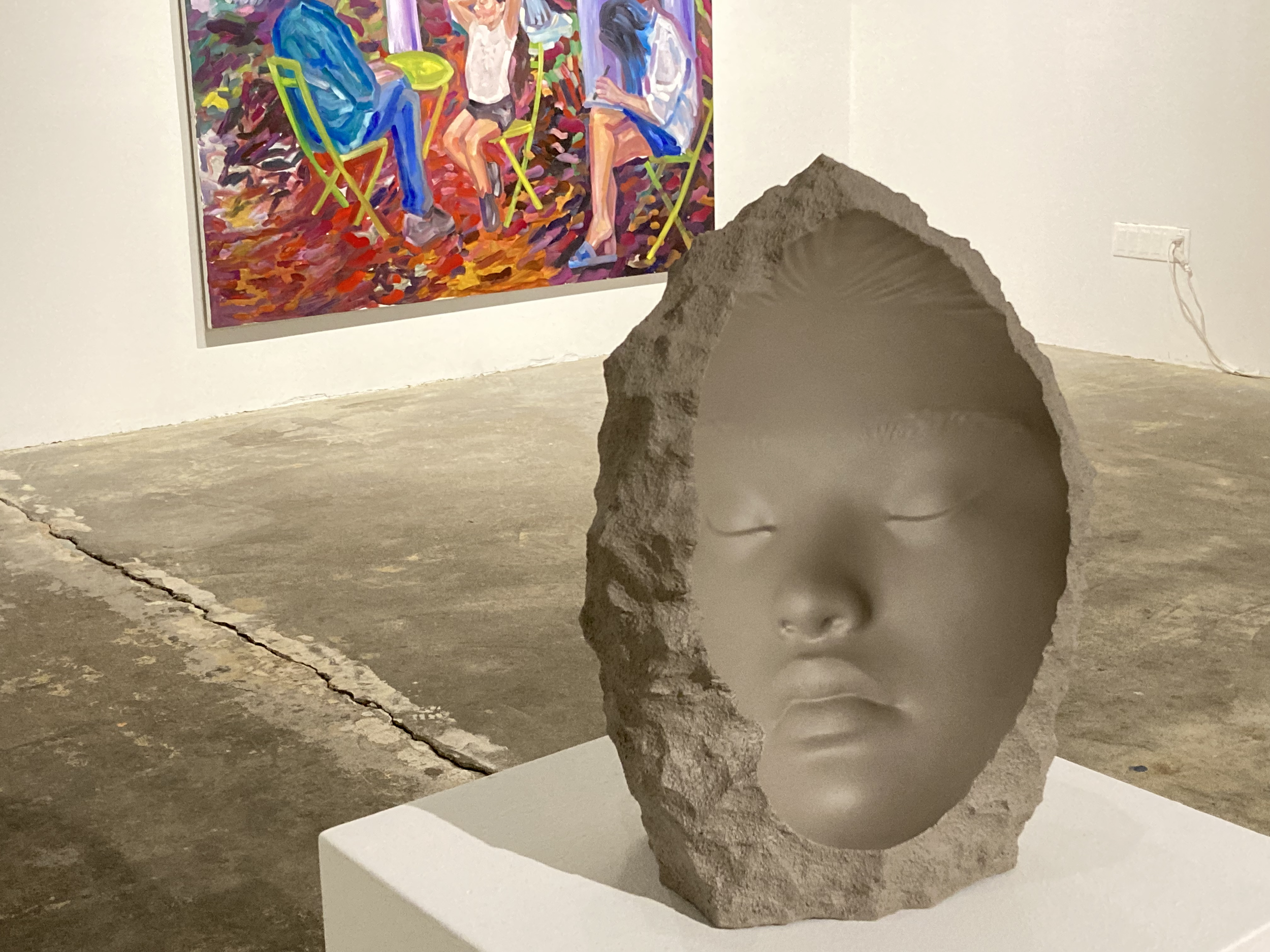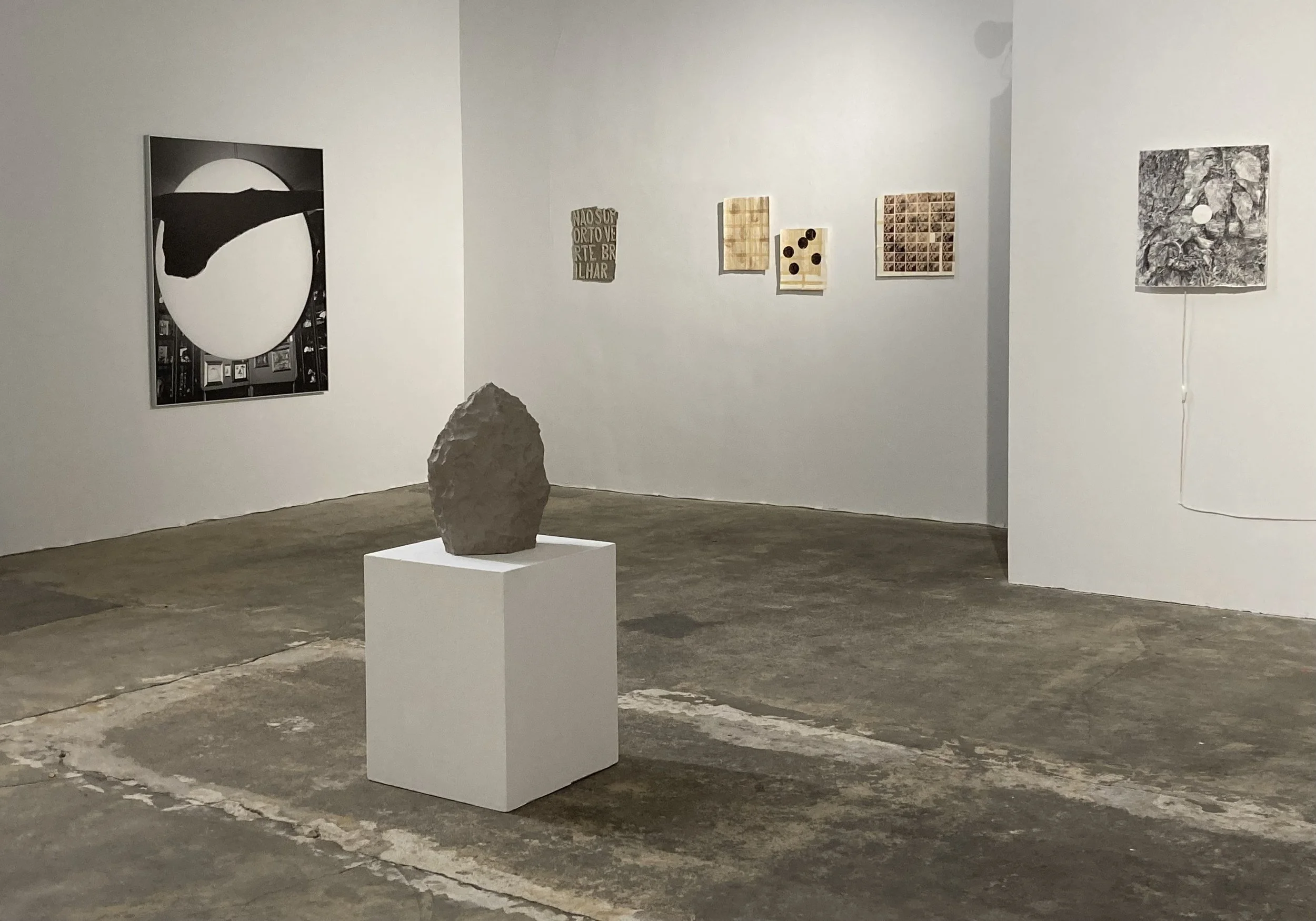
Rupture / Circle
20.11.2024 to 22.11.2024
Residency Unlimited, New York City, United States of America
Curated by Data Chigolashvili and Raffaella Matrone
Artists:
Daniela Ângelo, Lelia Byron, Beatriz Manteigas, Alejandro Monge Torres, and Kristė Stankevičiūtė
Photos courtesy of the curator for Residency Unlimited
This program is supported by Atelier Museu Júlio Pomar, Elizabeth Greenshields Foundation, Fundação Calouste Gulbenkian, Fundação PLMJ, Associação Quinta das Relvas, Cabe 184, Câmara Municipal de Albergaria-a-Velha, Fundación CAI, Porsche Zaragoza, the Consulate General of Spain in New York and Kurybinis Potencialas.
In November 2024, Residency Unlimited presents a final group exhibition of the year, which showcases the works of five artists in residence at RU: Daniela Ângelo, Lelia Byron, Beatriz Manteigas, Alejandro Monge Torres, and Kristė Stankevičiūtė. This exhibition is curated by RU Curator Data Chigholashvili and curator-in-residence Raffaella Matrone.
Intro:
Imagine you are in a distant future, at a former place of worship, where several artifacts have been collected – cabinets of curiosity again, except after museums, and back. You are unsure when and where these pieces come from, but you have a possibility to explore them and make connections, but it’s up to you how you go about this process.
Reflecting on residencies as moments of confluences, collaborations, and exchanges, they are also moments of rupture. Artworks find new contexts to exist, we re-adapt our languages and symbols, go through translations and interpretations to facilitate understanding – we decode and recode who we are to fit, compare, or understand ourselves cross-contextually. Cultural background influences our perception, collectively we often seem to be going in circles, but there can be fractures in this determinism that the exhibition “Rupture / Circle” invites you to explore. How would you perceive this exhibition, and what would your interpretation be if you did not have prior knowledge about the artworks? In other words, what would your experience be if you saw them with only what you already know, and the concept that suggests cross-contextual perception of artworks?
In this experimental format, you are invited to first see the exhibition and then read descriptions of works provided below, or the other way around.
Outro:
An unknown circle covering a vitrine is distorted by a fluid shape – in her photography, Daniela Ângelo decontextualizes museum objects by visually manipulating their perception. Through obstructing the fragments of established knowledge repositories, she questions the dominant cultural narratives that repeatedly go in circles. Exploring collective memory beyond museum contexts is an important theme to Alejandro Monge Torres, who ponders about the traces that societies leave behind. With an artifact that resembles a fossil of a human, he offers a time capsule, however, the artist intentionally does not specify to which moment in history it belongs to. The complexity of time is also central in Kristė Stankevičiūtė’s paintings, where she appropriates aspects of folk art that were often integrated in the mismatched aesthetics of monumental-decorative art in former socialist contexts. With seemingly random dots, or giant bodies, she reimagines Lithuanian ethnographic symbols that meet in different times. Lelia Byron explores an issue closer in space and time, which is a recurring concern of many urban centers. Observing the power dynamics of public space in NYC, in a single narrative her painting brings together the people and changes concerning the Elizabeth Street Garden – a community sculpture garden and a green space in Manhattan, currently facing eviction. The cycle of life in nature appears in various ways in the works of Beatriz Manteigas, which live differently depending on physical contexts. Lichens have grown on geotextiles used outdoors, while sunlight is referenced in many forms. Repeating images would intentionally fade faster with daylight, and alternative energy could power the circle’s movement over an imaginary landscape that can be of past or future.
Biographies:
Daniela Ângelo appropriates objects from everyday life and museum collections to re-signify and rehearse new narratives that question the production mechanisms of knowledge and collective memory. Objects are selected in a programmatic way, isolated from external references and portrayed in a surrealist atmosphere, through rigorous work of light that allows the crystallization of its sculptural qualities.
Lelia Byron is an interdisciplinary artist who makes paintings, murals, installations, sculptures, and public art projects. Lelia’s projects often include an investigative component and frequently begin with interviewing different people around diverse topics related to human rights, the complexity of communication between individuals, and the creative process. Thinking about ways to translate the interviews and stories into visual narratives that can reach others, Lelia works to create an overarching approach to a topic through a creative or unexpected method that can bring together the local and the global.
Beatriz Manteigas’ body of work consists of thinking exercises on cultural, social and ecological issues, which start from the singular to echo the plural, and which are mostly in the form of drawings and paintings on paper. To do this she uses representative elements that start from the particular – symbols, signs, letters, figures, but also colors and compositions – that populate images that are created in search of associations, confrontations, mistranslations and errors that promote and emphasize what appears different from the objective, but still allows itself to be plurally interpreted.
Alejandro Monge Torres’ sculptural work integrates materials as diverse as paper, steel, marble, cement and resin. For him each work is a technical challenge to resolve in pursuit of an aesthetically beautiful and conceptually forceful result. Monge’s work is somewhat a reflection of his character as an individual who always looks at the challenges that life and society impose on us from different points of view. The rarely achieved balance between the conceptual and the aesthetically beautiful is part of the essence of this artist.
Kristė Stankevičiūtė is a multidisciplinary artist. In her creative process, the artist pays major attention to color and the relationship between lines and stains. Somewhat paradoxically, even when depicting emotionally heavy narratives, her works are based on different impressions of lightness and color. The canvases become stop-motion shots, filling up with silhouettes suspended in moments of love, despair and fury. Seemingly comfortably curled up, the bodies lean against the ceiling, not fitting into the rooms they have delineated themselves.
